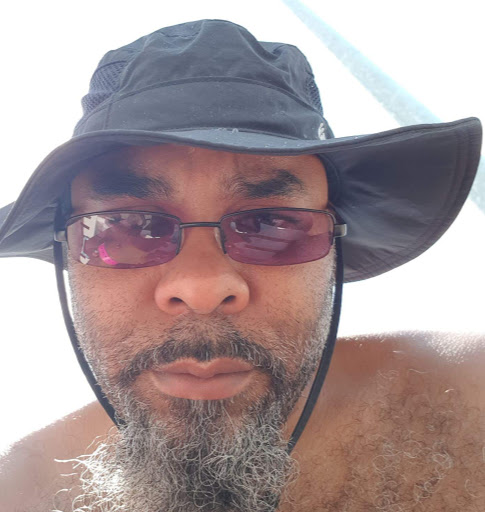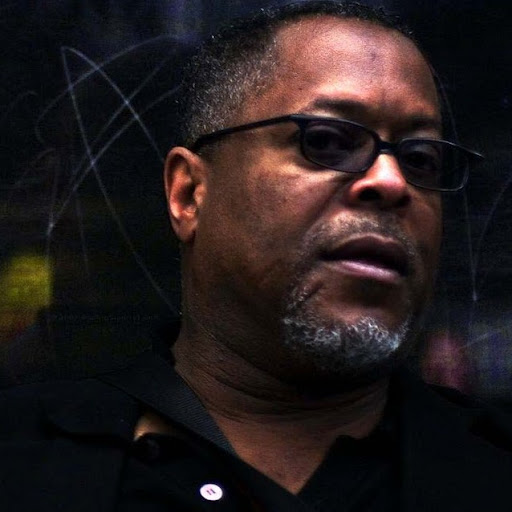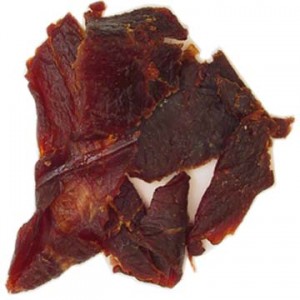Ronald L Reed
age ~37
from Colorado Springs, CO
Ronald Reed Phones & Addresses
- Colorado Springs, CO
- Clarksville, TN
- 2021 S Virginia St, Hopkinsville, KY 42240
- Fort Campbell, KY
- Iowa Falls, IA
- Washington, UT
- Fort Sill, OK
- Pleasant Hill, IA
Lawyers & Attorneys

Ronald Reed - Lawyer
view sourceSpecialties:
Civil Litigation
Automobile Accidents
Wrongful Death
General Liability
Liquor Liability
Negligence
Premises Liability
Trucking Accidents
Construction & Development
Automobile Accidents
Wrongful Death
General Liability
Liquor Liability
Negligence
Premises Liability
Trucking Accidents
Construction & Development
ISLN:
902235098
Admitted:
1983
University:
University of Florida, B.A., 1980
Law School:
University of Florida, J.D., 1983

Ronald Reed - Lawyer
view sourceSpecialties:
Family Law
ISLN:
902235074
Admitted:
1973
University:
City College of the City University of New York, B.A., 1969
Law School:
University of Florida College of Law, J.D., 1973
Name / Title
Company / Classification
Phones & Addresses
Manager
Thinking Tool LLC
Industrial Inorganic Chemicals
Industrial Inorganic Chemicals
Po Box 1606, Palmer Lake, CO 80133
Vice-President
Thinking Tools LLC
Business Services at Non-Commercial Site
Business Services at Non-Commercial Site
2580 Lk Mdw Dr, Woodmoor, CO 80132
Principal
Tofi Investments LLC
Investor
Investor
2580 Lk Mdw Dr, Woodmoor, CO 80132
PROFLEX ENVIRONMENTAL CONTAINMENT COMPANY LLC
MANNA-FEST CHRISTIAN CATHEDRAL INTERNATIONAL
HARDY, HILL, REED & TALLEY INVESTMENT GROUP, LLC
PREPARING A CHOSEN GENERATION
R-SQUARED, LLC
Resumes

Ronald Reed Portland, OR
view sourceWork:
pearl auto body of denver
Denver, CO
Aug 2011 to Nov 2011
auto body tech Reed's Repair Inc
Apr 2007 to Nov 2011
Mechanic on domestic and foreign vehicles, truck and heavy duty trucks coors of golden
Apr 2011 to Jul 2011
Temp Bagger Pearl Auto Body of Littleton
Littleton, CO
Nov 2010 to Feb 2011
Body Technician Assistant Detailer
Nov 2009 to Nov 2010
Detailer and Body Tech Assistant Pearl Auto Body of Denver
Denver, CO
Jul 2008 to Nov 2009
detailer Pearl Auto Body of Boulder
Boulder, CO
Mar 2008 to Jul 2008
detailer Black and White Auto
Colorado Springs, CO
Oct 2007 to Jan 2008
Body Tech Assistant
Denver, CO
Aug 2011 to Nov 2011
auto body tech Reed's Repair Inc
Apr 2007 to Nov 2011
Mechanic on domestic and foreign vehicles, truck and heavy duty trucks coors of golden
Apr 2011 to Jul 2011
Temp Bagger Pearl Auto Body of Littleton
Littleton, CO
Nov 2010 to Feb 2011
Body Technician Assistant Detailer
Nov 2009 to Nov 2010
Detailer and Body Tech Assistant Pearl Auto Body of Denver
Denver, CO
Jul 2008 to Nov 2009
detailer Pearl Auto Body of Boulder
Boulder, CO
Mar 2008 to Jul 2008
detailer Black and White Auto
Colorado Springs, CO
Oct 2007 to Jan 2008
Body Tech Assistant
Skills:
collision tech, mechanics tech
Real Estate Brokers

Ronald Reed Loan officer
view sourceSpecialties:
Purchase Loan
Refinancing
Home Equity
Refinancing
Home Equity
Experience:
16 years
License Records
Ronald O Reed
License #:
11949 - Active
Issued Date:
May 31, 1989
Renew Date:
Dec 1, 2015
Expiration Date:
Nov 30, 2017
Type:
Certified Public Accountant
Ronald L Reed
License #:
2705005704
Category:
Contractor
Ronald L Reed
License #:
11381 - Active
Issued Date:
Feb 24, 2013
Expiration Date:
Oct 31, 2017
Organization:
Firm Not Published
Ronald L Reed
License #:
RS131054A - Expired
Category:
Real Estate Commission
Type:
Real Estate Salesperson-Standard
Ronald P Reed
License #:
RS118368A - Expired
Category:
Real Estate Commission
Type:
Real Estate Salesperson-Standard
Medicine Doctors

Ronald R. Reed
view sourceSpecialties:
Ophthalmology
Work:
Reed Eye Associates
500 Kreag Rd STE 1, Pittsford, NY 14534
5852498300 (phone), 5852498380 (fax)
Reed Eye Associates
2345 Ridgeway Ave, Rochester, NY 14626
5857236070 (phone), 5857231837 (fax)
Reed Eye Associates
1105 Driving Park Ave, Newark, NY 14513
3153315721 (phone), 3153315722 (fax)
Reed Eye Associates
6353 Rdg Rd, Sodus, NY 14551
3154838300 (phone), 3154830062 (fax)
Reed Eye Associates
1338 E Rdg Rd STE 201, Rochester, NY 14621
5855446680 (phone), 5854671445 (fax)
500 Kreag Rd STE 1, Pittsford, NY 14534
5852498300 (phone), 5852498380 (fax)
Reed Eye Associates
2345 Ridgeway Ave, Rochester, NY 14626
5857236070 (phone), 5857231837 (fax)
Reed Eye Associates
1105 Driving Park Ave, Newark, NY 14513
3153315721 (phone), 3153315722 (fax)
Reed Eye Associates
6353 Rdg Rd, Sodus, NY 14551
3154838300 (phone), 3154830062 (fax)
Reed Eye Associates
1338 E Rdg Rd STE 201, Rochester, NY 14621
5855446680 (phone), 5854671445 (fax)
Education:
Medical School
University of Connecticut School of Medicine
Graduated: 1972
University of Connecticut School of Medicine
Graduated: 1972
Procedures:
Corneal Surgery
Eye Muscle Surgery
Lens and Cataract Procedures
Ophthalmological Exam
Eye Muscle Surgery
Lens and Cataract Procedures
Ophthalmological Exam
Conditions:
Glaucoma
Acute Conjunctivitis
Cataract
Diabetic Retinopathy
Keratitis
Acute Conjunctivitis
Cataract
Diabetic Retinopathy
Keratitis
Languages:
English
Description:
Dr. Reed graduated from the University of Connecticut School of Medicine in 1972. He works in Rochester, NY and 4 other locations and specializes in Ophthalmology. Dr. Reed is affiliated with Rochester General Hospital.

Ronald W. Reed
view sourceSpecialties:
Emergency Medicine
Work:
Reading Hospital & Medical Center Emergency Room
6TH Ave And Spruce St, Reading, PA 19611
6109888218 (phone), 4846285252 (fax)
6TH Ave And Spruce St, Reading, PA 19611
6109888218 (phone), 4846285252 (fax)
Education:
Medical School
Temple University School of Medicine
Graduated: 1972
Temple University School of Medicine
Graduated: 1972
Conditions:
Abdominal Hernia
Abnormal Vaginal Bleeding
Acne
Acute Bronchitis
Acute Conjunctivitis
Abnormal Vaginal Bleeding
Acne
Acute Bronchitis
Acute Conjunctivitis
Languages:
English
Description:
Dr. Reed graduated from the Temple University School of Medicine in 1972. He works in West Reading, PA and specializes in Emergency Medicine. Dr. Reed is affiliated with Reading Hospital & Medical Center.

Ronald Raymond Reed
view sourceSpecialties:
Ophthalmology
Education:
University of Connecticut(1972)

Ronald Kirby Reed
view sourceSpecialties:
Pediatrics
Neurology
Neurology with Special Qualifications in Child Neurology
Neurology
Neurology with Special Qualifications in Child Neurology
Education:
University of Minnesota, Twin Cities (1974)
Us Patents
-
Printed Circuit Board Through Hole Technique
view source -
US Patent:49649485, Oct 23, 1990
-
Filed:Nov 13, 1989
-
Appl. No.:7/435703
-
Inventors:Ronald G. Reed - Monument CO
-
Assignee:ProtoCAD, Inc. - Colorado SPrings CO
-
International Classification:B44C 122
C23F 102
C03C 1500
C03C 2506 -
US Classification:1566591
-
Abstract:A process of forming plated through-holes in a printed circuit board involves placing a film of fluid ink having electrically conductive properties on a side wall of the hole, curing the film to a solid and electroplating a layer of metal on the conductive ink film. The conductive ink preferably is a composition including conductive particles such as carbon and silver flakes. The ink also preferably includes a thermosetting or radiation curable binder and a thinner. The film of ink is cured before the layer of metal is electroplated thereon. The plated through-hole is protected from the etchant when the conductors are etched by placing a radiation curable putty material into the hole, curing it, and then depositing a layer of resist on top of the cured putty and a conductive sheet clad to the substrate of the circuit board.
-
Process For Use In Rapidly Producing Printed Circuit Boards Using A Computer Controlled Plotter
view source -
US Patent:47207981, Jan 19, 1988
-
Filed:Apr 16, 1985
-
Appl. No.:6/725817
-
Inventors:Ronald G. Reed - Colorado Springs CO
John T. Rasper - Colorado Springs CO -
Assignee:ProtoCAD, Inc. - Colorado Springs CO
-
International Classification:B05C 502
-
US Classification:364489
-
Abstract:A conductor clad board from which the printed circuit board is produced is operatively retained for manipulation in a plotter controlled by a computer. Etchant-resist material is laid down in a printed circuit conductor pattern on at least one conductive sheet of the board by a marking instrument operatively manipulated by the plotter. The computer controls the application of the resist material in accordance with printed circuit board computer aided design information in the computer memory. Both conductive sheets of the board can be marked with resist after establishing the orientation of the board so the printed circuit patterns on opposite sides of the board occupy a predetermined aligned relationship. After etching, the board is again retained in the plotter and holes are drilled through the board by using drill apparatus operatively adapted for use and manipulation by the plotter.
-
Forming Plated Through Holes In A Printed Circuit Board By Using A Computer Controlled Plotter
view source -
US Patent:48232777, Apr 18, 1989
-
Filed:Nov 10, 1986
-
Appl. No.:6/929390
-
Inventors:Ronald G. Reed - Colorado Springs CO
-
Assignee:ProtoCAD, Inc. - Colorado Springs CO
-
International Classification:G05C 902
-
US Classification:364488
-
Abstract:Plated through holes in a printed circuit board can be conveniently produced during manufacture of the circuit board under the control of a computer controlled plotter by the use of a pen-like instrument which positively displaces a thick film fluid conductive adhesive on a tip of the instrument. The fluid is smeared onto the side walls of the hole by moving the tip in a peripheral motion around the side wall of the hole. Copper is electroplated directly onto the conductive adhesive. Resist material is applied in a similar fashion prior to etching the circuit traces on the surface sheets of the circuit board.
-
Optical Sight For Computer Controlled Plotter With Improved Locating Capability
view source -
US Patent:46545174, Mar 31, 1987
-
Filed:Apr 16, 1985
-
Appl. No.:6/725416
-
Inventors:Ronald G. Reed - Colorado Springs CO
-
Assignee:ProtoCAD, Inc. - Colorado Springs CO
-
International Classification:G01J 120
-
US Classification:250201
-
Abstract:An optical sight for a computer controlled plotter includes a magnifying lens positioned in an image path through the sight. The magnifying lens magnifies the image of the reference point located by the sight about an optical axis through the sight. The magnification achieves greater accuracy in locating the reference point. An electronic device which responds to light impinging thereon is positioned in the image path at the optical axis. Position signals supplied by the electronic means are related to the location of the impinging light of the reference point relative to the optical axis. The position signals are used by a computer controlling the plotter to manipulate the plotter to automatically locate the reference point.
-
Drill Apparatus For Use With Computer Controlled Plotter
view source -
US Patent:46549560, Apr 7, 1987
-
Filed:Apr 16, 1985
-
Appl. No.:6/725415
-
Inventors:Ronald G. Reed - Colorado Springs CO
Michael Gustafson - Colorado Springs CO -
Assignee:ProtoCAD, Inc. - Colorado Springs CO
-
International Classification:B23Q 3157
B23B 4722
B23B 4708 -
US Classification:29568
-
Abstract:Drilling apparatus is adapted for use with a computer controlled plotter to selectively use the plotter as an automatically positionable hole drilling device. A drill motor of the drilling apparatus is carried and manipulated by a carrier mechanism of the plotter in a manner similar to that in which a conventional plotter instrument is manipulated. A coupling apparatus is attached to the carrier mechanism for the purpose of selectively mechanically connecting to and establishing a pneumatic seal for supplying pressurized gas to operate the drill motor. An alignment apparatus is connected between the carrier mechanism and the drilling apparatus to position an axis through the drill bit of the drill motor orthogonal to the plotter table. An actuator apparatus moves the drill motor toward the plotter table to drill holes in the material positioned on the plotter table.
-
Plated Through-Holes In A Printed Circuit Board
view source -
US Patent:49117963, Mar 27, 1990
-
Filed:Mar 23, 1988
-
Appl. No.:7/172199
-
Inventors:Ronald G. Reed - Colorado Springs CO
-
Assignee:ProtoCAD, Inc. - Colorado Springs CO
-
International Classification:C25D 502
-
US Classification:204 15
-
Abstract:A process of forming plates through-holes in a printed circuit board involves placing a film of fluid ink having electrically conductive properties on a side wall of the hole, curing the film to a solid and electroplating a layer of metal on the conductive ink film. The conductive ink preferably is a composition including conductive particles such as carbon and silver flakes. The ink also preferably includes a thermosetting or radiation curable binder and a thinner. The film of ink is cured before the layer of metal is electroplated thereon. The plated through-hole is protected from the etchant when the conductors are etched by placing a radiation curable putty material into the hole, curing it, and then depositing a layer of resist on top of the cured putty and a conductive sheet clad to the substrate of the circuit board.
-
Crt With Internal Thermionic Valve For High Voltage Control
view source -
US Patent:44503873, May 22, 1984
-
Filed:Mar 30, 1981
-
Appl. No.:6/248925
-
Inventors:Ronald G. Reed - Colorado Springs CO
Robin R. Schmuckal - Colorado Springs CO
Robert K. McCullough - Colorado Springs CO -
Assignee:Hewlett-Packard Company - Palo Alto CA
-
International Classification:H01J 2980
-
US Classification:315375
-
Abstract:The magnitude of a DC high voltage supplied to an internal element of a CRT is varied by a thermionic valve that is located within the envelope of the CRT and that forms a voltage divider with an external load resistor. Only a small scale signal referenced near ground is needed to produce a several thousand volt change in the high voltage supplied to the internal CRT element. The variable high voltage may control a variable deflection factor, variable spot size, or in the case of a beam penetration CRT, either variable persistence or variable trace color. In a particular beam penetration color CRT having a split anode the thermionic valve comprises a tetrode flood gun coupled by an electron mirror to a plate region in the neck of the CRT.
-
Variable Size Segmented Anode Array For Electroplating
view source -
US Patent:48286540, May 9, 1989
-
Filed:Mar 23, 1988
-
Appl. No.:7/172195
-
Inventors:Ronald G. Reed - Colorado Springs CO
-
Assignee:ProtoCAD, Inc. - Colorado Springs CO
-
International Classification:C25D 500
C25D 1712 -
US Classification:204 23
-
Abstract:An anode used in electroplating is formed by a plurality of individual anode segments. The anode segments are arranged in predetermined patterns. The segments of certain patterns are selectively energized to establish an effective anode size that relates to the size of the article to be electroplated, thereby establishing an electrical field of uniform characteristics to transfer ions from the anode to the article at a uniform deposition rate over the whole surface of the article. By adjusting the effective size of the anode to correspond or relate to the size of the article, the non-uniform deposition rates associated with concentrated localized field are avoided, and the physical size of the electroplating apparatus can be reduced. An electrophoretic ion filter is also placed between the cathode and the article. This ion filter is preferably formed of a plastic porex material, such as porous polypropylene or polyethylene.
Isbn (Books And Publications)





Business Tax Deduction Master Guide: Strategies for Business and Professional People
view sourceAuthor
Ronald V. Reed
ISBN #
0131082582

Business Tax Deduction Master Guide: Strategies for Business and Professional People
view sourceAuthor
Ronald V. Reed
ISBN #
0131082663

I Wish That I Could Live Outdoors: Mohican Outdoor School Student Poetry Contest Winners & Others.
view sourceAuthor
Ronald Reed
ISBN #
0685532682

Symposium on Printing: [held in 1970 in Honour of the 150th Anniversary of the Foundation of the Leeds Philosophical and Literary Society]
view sourceAuthor
Ronald Reed
ISBN #
0950192104
Googleplus

Ronald Reed
Education:
Seaside high
Tagline:
(BLEED BLACK AND GOLD 4LIFE)

Ronald Reed
Work:
Tyson Foods - Supervisor

Ronald Reed

Ronald Reed

Ronald Reed (Ronwired)

Ronald Reed

Ronald Reed

Ronald Reed
Classmates

Ronald Reed
view sourceSchools:
Veedersburg High School Veedersburg IN 1974-1978
Community:
Dale Gust, Patricia Scott, Brenda Hammersley, Myretta Cox, Chris Boone

Ronald Reed
view sourceSchools:
Colorado School for the Deaf & Blind Colorado Springs CO 2003-2007
Community:
James Shoemaker, Deidre Vansyoc

Ronald Reed
view sourceSchools:
Sundance Elementary School Sundance WY 1961-1962, Douglas Primary School Douglas WY 1962-1964, South Elementary School Douglas WY 1964-1965, Clark Elementary School Powell WY 1965-1966, Jackson Elementary School Riverton WY 1966-1967, Ralph Witters Elementary School Thermopolis WY 1967-1968, Almondale Middle School Littlerock CA 1968-1969, Dean Morgan Junior High School Casper WY 1969-1970
Community:
Richele Mailand, David Childress

Ronald Reed
view sourceSchools:
Henry Clay High School Ashland VA 1949-1953
Community:
Gerald Smith

Ronald Reed
view sourceSchools:
Pine Hill Elementary School Cottage Grove MN 1962-1968, Wilson Campus High School Mankato MN 1968-1974
Community:
Sharon Jones, Jerry Young, David Kaplan, Barb Rivers, Luann Torgerson

Ronald Reed
view sourceSchools:
Laura Ward Elementary School Chicago IL 1978-1983, Seeley McCord Elementary School Benton Harbor MI 1984-1985, King Junior High School Benton Harbor MI 1985-1986
Community:
Sandra Whaley

Ronald Reed
view sourceSchools:
Baileysville High School Baileysville WV 1983-1987
Community:
Dwayne Morgan, Susan Riffe

Ronald Reed
view sourceSchools:
Blakenburg Elementary School Philadelphia PA 1955-1958
Community:
Patricia Smith, Rachel Pio, Natalie Johnson, Earlene Wright

Ronald Dro Reed
view source
Ronald M. Reed
view source
Ronald Poodoo Reed
view source
Ronald A. Reed
view source
Ronald Scott Reed
view source
Ronald D Reed Jr.
view source
Ronald Richard Reed
view source
Ronald James Reed
view sourcePlaxo

Ronald E. Reed
view sourceParamus, NJ

Ronald Reed
view source
Ronald Reed
view sourceBirmingham, MIPartner at Agilis Marketing Communications, Inc. Full service marketing consulting and advertising design firm.

Ronald Reed
view sourcePast: Supervisor at HY Ten, Supervisor at SPIRIT, supervisor at Baileys

Ronald C. Reed
view sourceCoral Springs, FL

Reed, Ronald, GVSOL
view sourceat t
Youtube
Myspace
News

'American Idol' Recap: Harsh Harry Connick Jr. Schools Auditioning Twins
view source- Unfortunately, those who didn't make the cut were oddly-operatic restaurant pianist Grace Anne Field, a very fit Gaddy Basil Foster, eccentric guitarist Ronald Reed and LJ Hernandez, who flooded the judges with compliments before pulling glow sticks out of his pockets.
- Date: Jan 16, 2014
- Source: Google

Venture capital funding plunges in Michigan
view source- Ronald Reed, chairman of the Michigan Venture Capital Association and managing director of Birmingham-based Seneca Partners, said there were no unusual factors that caused the drop in investment dollars.
- Date: Apr 15, 2011
- Category: Business
- Source: Google
Flickr
Get Report for Ronald L Reed from Colorado Springs, CO, age ~37













